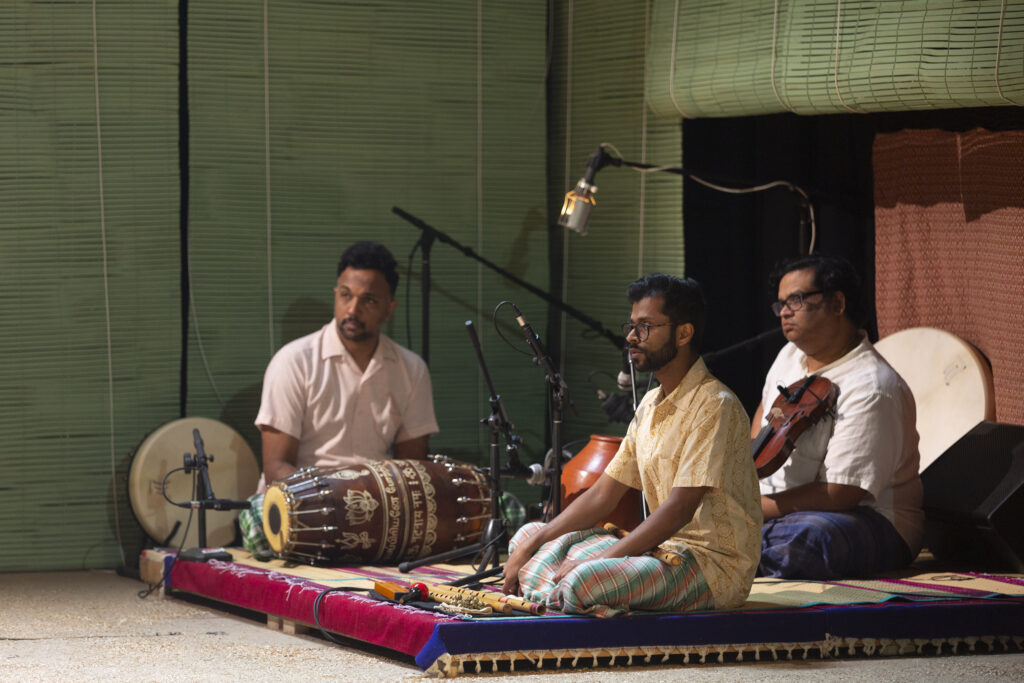A Sprawling, Haunting New Play, ‘Counting and Cracking’ Leaves Viewers Wanting Even More
Set in war-ravaged Sri Lanka and Australia, ‘Counting and Cracking’ most fundamentally is about the bonds formed within families and between generations, both in spite of external forces and under their influence.

History is so packed with conflicts that turned into humanitarian disasters that some tend to be overlooked, or at least underemphasized. I’m not sure how much today’s high school students learn about the civil war that raged in Sri Lanka between 1983 and 2009 — or its long and complicated lead-up, for that matter — but as is made clear in S. Shakthidharan’s sprawling, haunting new play, “Counting and Cracking,” it can’t be enough.
“Counting,” now making its North American premiere, clocks in at three and a half hours, including two intermissions. Yet under the vigorous but sensitive direction of Eamon Flack — credited in the program as Mr. Shakthidharan’s associate writer, while the playwright is listed as Mr. Flack’s associate director — this multi-generational account of a family’s struggles and progress both in Sri Lanka and after relocating to Australia doesn’t drag for a single moment.
To the contrary, “Counting,” which is deeply informed by Mr. Shakthidharan’s own family background, accomplishes what is also done by the best historical fiction: It leaves us hungry to learn more about the subject at hand.
The play opens at Sydney in 2004 with a Hindu ritual: Siddhartha, a 21-year-old Australian native, is helping his mother, Radha, scatter the ashes of a dead relative in a local river. It soon emerges that Radha was born and raised in Sri Lanka, as a member of that country’s Tamil minority; she arrived in Australia while pregnant with her son and carrying her grandfather’s ashes, which she has yet to bury.
Over three acts, these mysteries are explored and eventually solved, as Messrs. Shakthidharan and Flack lead a company of mostly South Asian actors back and forth in time — from 1956, the year of Radha’s birth and when a fledgling Sri Lankan Tamil nationalist Federal Party became dominant in Tamil districts, and stopping in 1977 and 1983, as tensions between Sri Lankan’s majority Sinhalese and the Tamils festered and exploded into violence.
Radha is played in middle age by a feisty, funny, and moving Nadie Kammallaweera; we also meet Radha as a young woman, who in Radhika Mudaliyar’s performance has a righteous spunk that presages her latter behavior. We’re introduced to her grandfather, Apah, a high-ranking politician in the centrist United National Party who, in 1956, opposes an act that would be passed that year by the Parliament of Ceylon — Sri Lanka’s colonial name — replacing English with Sinhala as the sole official language.
Paraphrasing Colin R. de Silva, who was a key member of Parliament at that time, Apah, played with gentle urgency and easy gravitas by Prakash Belawadi, warns, “Two languages, one country. One language, two countries.” Apah’s words prove prescient in the decades that follow, as persecution against his ethnic group fuels the rise of a guerrilla organization, the Tamil Tigers, begetting more retaliation. An anti-Tamil pogrom is charted with breathless suspense, providing a harrowing climax.

Most fundamentally, though, “Counting and Cracking” is about the bonds formed within families and between generations, both in spite of external forces and under their influence. “Weddings are more important than politics”: So declares Radha’s wise, resilient grandmother, Aacha, who is as warm as she is tough in Sukania Venugopal’s portrayal; it’s a line that Radha will repeat, with even more defiance.
Indeed, for all the darkness traced here, the production overall sustains a joyful spirit, enhanced by musicians playing Stefan Gregory’s score with traditional instruments, as actors positioned beside them translate into English the Tamil and Sinhalese lines that pop up throughout the script. The lyrical, celebratory feel and general authenticity of the staging are further enhanced by Mr. Shakthidharan’s mother, Anandavalli, a classical Indian dancer who in addition to serving as “cultural advisor” has provided playful choreography and worked with Dale Ferguson on the show’s vibrant, stylish costumes.
The one element that feels a little self-conscious, but still proves endearing, is the youthful romance that develops between Siddhartha (a spry, sweet Shiv Palekar) and a law student, an Aboriginal woman named Lily (a graceful Abbie-lee Lewis). Siddhartha, who calls himself Sid, insists early on, “I’m not Sri Lankan, I’m Australian.” But with help from those who love him, Lily among them, he discovers that identity and belonging can be richer than that distinction suggests.
“Do you think you can have two homes?” Siddhartha asks Lily at the beginning of the third act. Moments later, he resolves, “OK, maybe it’s not two homes. Maybe it’s still one, but just … a bigger one. It expands, you know?” Apah may strive in vain to protect a similar vision, but “Counting and Cracking,” for all the sorrow it documents, still carries hope for the future.
Correction: The character Lily is Aboriginal. She was misidentified in an earlier version.

